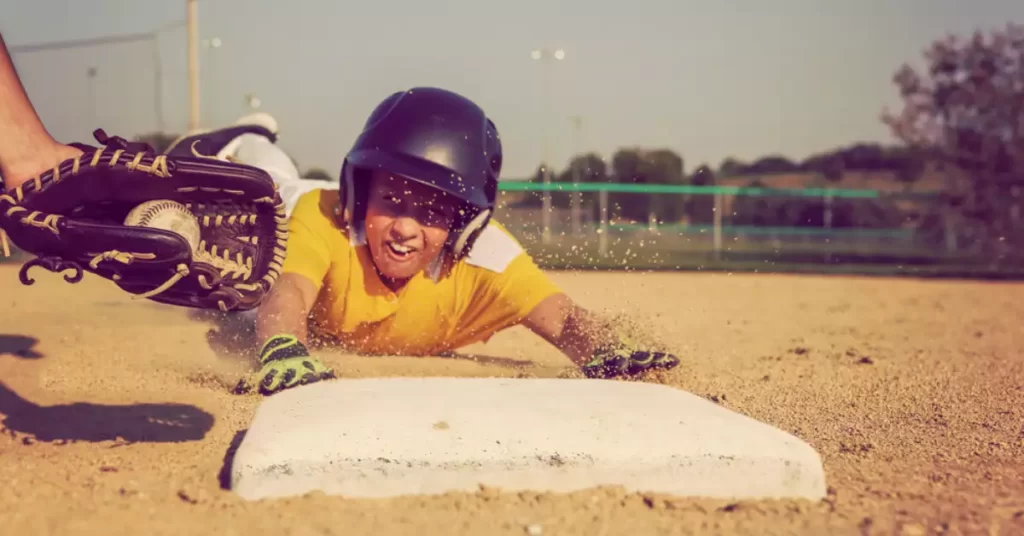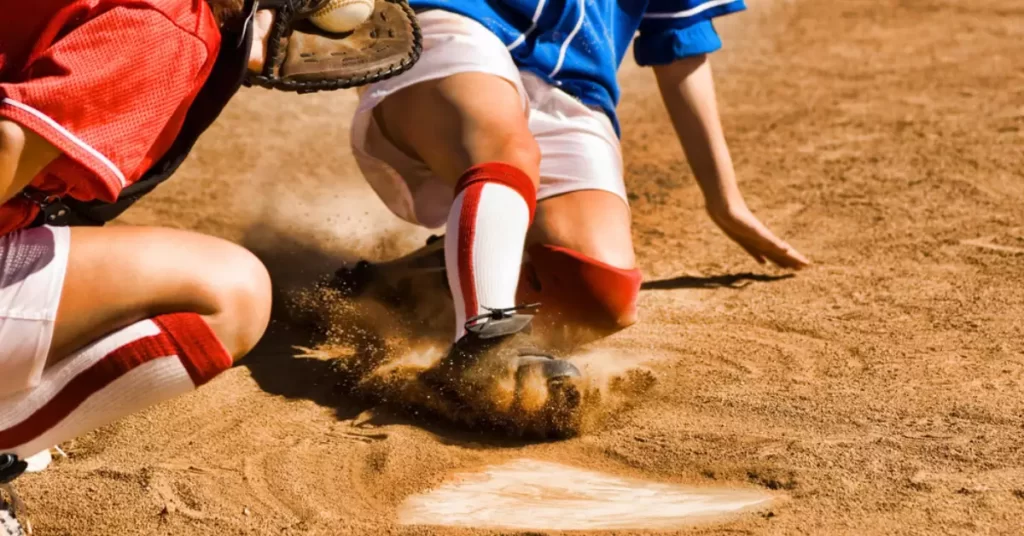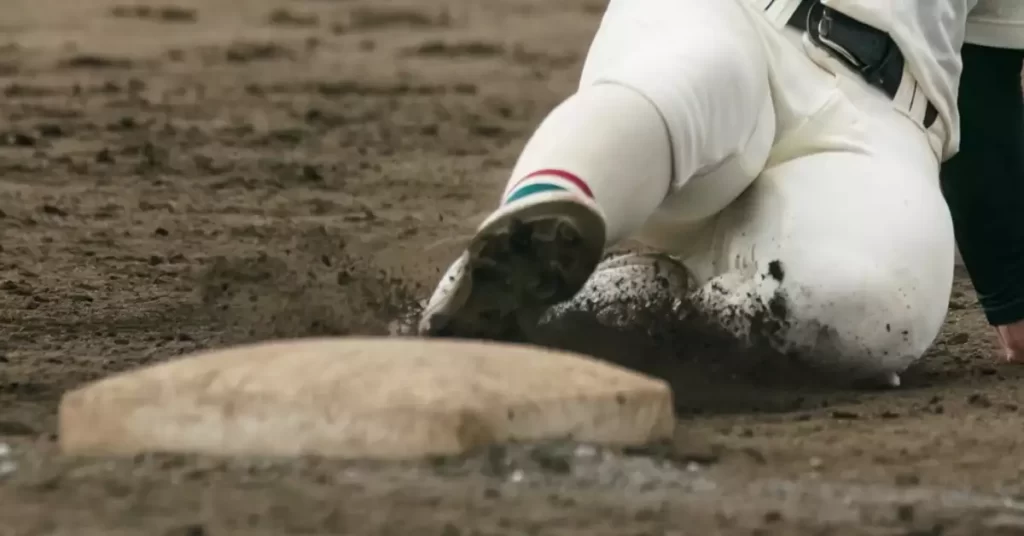Diving into the world of baseball, one quickly realizes the importance of sliding techniques. Mastering this skill not only adds finesse to your game but also enhances your performance. Sliding in baseball is an essential aspect that players often overlook.
A proper slide can make or break a game by allowing players to reach bases safely and avoid potential injuries. This article delves into the various techniques, tips, and tricks for mastering the art of sliding in baseball, giving you a competitive edge on the field.
Unlock the secrets to successful sliding and elevate your game to new heights. Learn the best practices, overcome common mistakes, and maximize your potential on the field. Ready to become a sliding pro? Let’s dive in!
Why do baseball players slide?
Sliding in baseball is an important technique that is used to help a baserunner avoid being tagged out by the fielding team. Sliding can also help a runner to advance safely to a base or even score a run.
In baseball, the defensive team can tag a runner with the ball to record an out. If a runner is approaching a base and the fielder has the ball, the runner can try to slide to avoid being tagged out.
Sliding can also help a runner to stay in control and maintain their balance while rounding the bases, especially when running at high speeds.
Additionally, sliding can help a runner to avoid collisions with fielders, which can result in injuries for both the runner and the fielder. By sliding, the runner can safely make contact with the base and avoid collisions that could lead to injury.
Overall, sliding is an important part of baseball, and mastering the different types of slides can greatly improve a player’s ability to stay safe and perform well on the field.
Different Types of Baseball Slides
There are several types of slides that baseball players can use to get to base safely and effectively. The most common slides are the feet-first slide and the head-first slide.
Feet-first slide
This is the most basic type of slide and is often the first one that players learn. In a feet-first slide, the player approaches the base with their legs extended and their toes pointed towards the base.
As they near the base, they drop their body to the ground and slide on their buttocks and legs, reaching out to touch the base with their hand. This type of slide is safer and less likely to result in injury, but it may not be as fast as the head-first slide.
Head-first slide
This type of slide is faster than the feet-first slide and is often used when trying to steal a base or evade a tag from a fielder. In a head-first slide, the player approaches the base with their hands extended in front of them and their head down.
As they near the base, they dive head-first towards the base, tucking their chin and extending their arms to touch the base with their hand. This type of slide is riskier and can result in injury if not executed correctly, but it can be very effective in certain situations.

Here’s some other types of slides:
Hook Slide
A hook slide is a type of slide where the player slides into the base with one leg extended while hooking the other leg around the base. This slide is commonly used when the player is trying to avoid a tag while sliding.
To execute a hook slide, the player approaches the base at an angle, slides with their upper body and one leg extended, and then uses the other leg to hook around the base to touch it.
Pop-up Slide
A pop-up slide is a technique used by players when they are sliding into a base and then immediately popping up and preparing for the next play. The pop-up slide is often used when a player is sliding into second base or third base and needs to quickly prepare for a potential throw to another base.
To execute a pop-up slide, the player slides into the base, then pops up to their feet, turns their body towards the next base, and prepares for the next play.
Barrel Roll Slide
The barrel roll slide is a type of slide where the player rolls over their shoulder while sliding into the base. This type of slide is commonly used when the player is trying to avoid a tag while sliding, as it allows the player to quickly change direction while sliding.
To execute a barrel roll slide, the player approaches the base at an angle, then rolls their body over their shoulder while extending their hand to touch the base.
Each type of slide requires different techniques, and it’s important for players to practice and master each one. Understanding the different types of slides and knowing when to use each one can make a big difference in a player’s ability to get to base safely and effectively.
How to Slide in Baseball? (Bent-Leg 10-Step Guide)
Approach the base
Start by approaching the base you want to slide into at full speed, with your eyes focused on the fielder who has the ball. This will help you to determine the direction you need to slide in.
Choose the side of the base
As you approach the base, identify the side of the base you want to slide on. You should try to avoid sliding directly into the base, as this could result in an injury.
Slow down
Start to slow down as you get closer to the base. This will allow you to prepare for the slide and help you to maintain control of your body.
Lower your center of gravity
As you near the base, lower your center of gravity by bending your knees and leaning forward. This will help you to stay balanced and reduce the risk of injury.
Extend your leading leg
Extend your leading leg out towards the base and use it to initiate the slide. Your leading leg should be fully extended and straight, with your foot pointed towards the base.
Pull your trailing leg behind you
As you start to slide, pull your trailing leg behind you and towards your body, bending it at the knee. This will help you to maintain balance and control as you slide.
Keep your hands up
Keep your hands up and away from the ground to avoid injury. Your hands should be positioned slightly above your head, with your fingers pointing upwards.
Keep your head up
Keep your head up and your eyes focused on the base as you slide. This will help you to maintain your balance and avoid injury.
Use your momentum
Use your momentum to propel yourself toward the base. Your body should be slightly angled towards the base, with your feet pointing in the direction you want to go.
Touch the base
Touch the base with your hand or foot as you slide past it. Once you have touched the base, you can continue your slide to slow down or stand up to continue running.
Remember, mastering the bent-leg slide takes practice, so be patient and keep working at it. With time and experience, you’ll be able to execute this slide with ease, speed, and precision.

Baseball Sliding Rules
In baseball, sliding is not only an important skill, but it’s also a technique that is governed by specific rules. Here are some of the most important sliding rules in baseball:
Sliding on a force play
When a player is running to a base and the fielder has the ball in their possession, the runner must slide directly into the base in an attempt to avoid contact with the fielder. If the runner makes contact with the fielder, they will be called out.
Interference
A runner cannot interfere with a fielder who is trying to make a play on the ball. If a runner slides and makes contact with a fielder in an attempt to prevent them from making a play, the runner will be called out.
Illegal slides
Certain slides are considered illegal and can result in a runner being called out. These include slides that are aimed at injuring the fielder, slides where the runner makes contact with the fielder before touching the base and slides where the runner tries to take out the fielder with their cleats.
Leaving the base
Once a runner has touched a base, they must maintain contact with it until the ball is pitched. If the runner leaves the base too early, they may be called out.
Catcher collisions
A runner cannot intentionally collide with the catcher in an attempt to jar the ball loose. If the runner makes contact with the catcher without attempting to reach the plate, they will be called out.
Understanding and following the sliding rules in baseball is essential for both runners and fielders. By knowing the rules and practicing the proper sliding techniques, players can stay safe, avoid injuries, and increase their chances of success on the basepaths.

Tips for Improving Your Sliding Technique
Practice sliding with a coach or experienced player
Getting feedback from someone who has experience with sliding can be very helpful in improving your technique. A coach or more experienced teammate can help you identify areas to work on and offer advice for improvement.
Use a sliding mat
Using a baseball sliding mat can help a player practice and perfect their sliding technique, ensuring that they are safe and efficient on the field.
Strengthen your legs and core
Sliding requires good leg strength and balance, so incorporating exercises like lunges, squats, and core workouts into your training can help improve your sliding technique.
Focus on your footwork
Proper footwork is key to executing a successful slide. Make sure you’re approaching the base or plate with the correct foot forward and that you’re driving off that foot as you slide.
Keep your eyes up
It’s important to keep your eyes up and focused on the base or plate as you slide rather than looking down at the ground. This can help you maintain control and avoid collisions with fielders.
Common Mistakes to Avoid When Sliding
Sliding too early or too late
Timing is key when it comes to sliding, and sliding too early or too late can result in being tagged out or even injured. Make sure to time your slide so that you reach the base or plate at the same time as the ball.
Sliding headfirst
While sliding headfirst can be effective in some situations, it’s generally considered more dangerous than sliding feet-first. Headfirst slides can lead to collisions with fielders or injuries like jammed fingers or wrists.
Not committing fully
When sliding, it’s important to fully commit to the slide and not hesitate or pull back at the last second. Hesitating can result in being tagged out or not reaching the base or plate safely.
Sliding in a straight line
Sliding in a straight line can make it easier for fielders to tag you out. Instead, try to slide in a curved or angled path to make it more difficult for the fielder to make contact with you.
Failing to protect yourself
Sliding can be hard on the body, and failing to protect yourself can result in scrapes, bruises, or more serious injuries. Wearing sliding pants or knee pads can help protect your legs while tucking your arms close to your body can help protect your shoulders and arms.
Final Words
As we wrap up, remember that mastering the art of sliding in baseball takes practice, dedication, and patience. Implement the techniques discussed in this article, and you’ll find yourself sliding with ease and precision in no time.
Always prioritize safety and proper form when practicing your slides. With the newfound knowledge and skills in your arsenal, you’re now well-equipped to face your opponents on the field with confidence. Slide into victory and enjoy the thrill of the game!
